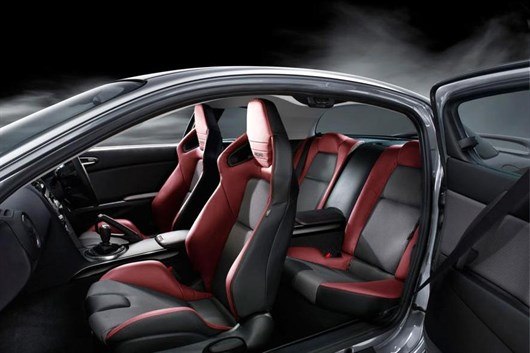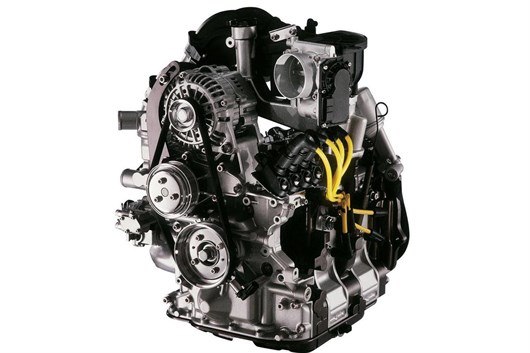Future Classic Friday: Mazda RX-8

If at first you don't succeed, try again. So goes the age-old mantra. And if it were applied in automotive terms, then Mazda would surely be the manufacturer most deserving of it.
The Japanese firm was one of the pioneers of the Twin Rotary Wankel Engine, initially launched in the NSU Spider in 1964. Felix Wankel's design was revolutionary - quite literally - and delivered incredible smoothness and willingness to rev. But, although NSU was first to series production, it was Mazda that was the true pioneer, showing the Cosmo as a concept car several months earlier, in 1963.
It would be 1967 before a production Cosmo - the 110S - appeared, concurrent with NSU's Ro80, but while NSU fell on its own sword, eventually sucked up by Audi after multiple premature rotary engine failures pretty much wiped out the company, Mazda persisted into the 21st century.
The RX-8 was the spiritual successor to the RX-7, the brand's sports car flagship, but was pitched at a slightly lower market. Its perceived rivals were coupes such as the Audi TT, BMW 3-Series Coupe and Peugeot 406 Coupe, all of which had a staunch following.

Where the RX-7 (and, indeed, all rotary engined cars before it) had failed was in the reliability of its rotary powerplant. Unless meticulously maintained, failures generally occured anywhere between 30,000 and 70,000 miles, which by Japanese car standards was pretty poor form.
The RX-8 had a job to do, then, and that was to shake off the bad reputation of the past. As a result, Mazda made a big play of the fact that the car's all-new RENESIS engine had been tested and developed to iron out the reliability problems of the past.
Indeed, the media perceptions were excellent. The RX-8 was a breath of fresh air. It was more practical than most coupes thanks to its 'freestyle' rear doors, which hinged backwards to give access to the back seats, while the rotary engine's compact design meant there was some pretty decent interior space on offer.
It was terrific to drive, too. By mounting the engine behind the front suspension and axle, and the fuel tank ahead of the rear subframe, Mazda's engineers achieved a near-perfect 50:50 weight distribution front-to-rear, while rear-wheel-drive and the RENESIS's impressively linear power delivery meant you could get the power down quickly, and with a hint of oversteer.

Throw in great value for money and a strong warranty, and there was a lot to like about the RX-8 - apart from its high carbon dioxide emissions and prodigious thirst for petrol.
A decade ago, these things could be forgiven, for RX-8s remained rewarding cars to own. But therein lies the caveat. Today, they rarely do.
Alas, despite Mazda's claims at launch, its most recent excursion into the world of rotary engines has proven that the design still requires some rectification, as the age-old problems of worn rotor tips and excessive oil consumption have once again reared their ugly heads, albeit a little later down the line. Most RX-8s with more than 80,000 on the clock will either have had an expensive engine rebuild or will be due one fairly soon, and that's a crying shame, as the idea of a rotary unit is wonderful in theory.
Add into the mix another Mazda foible, which the RX-8 appears to have inherited from the Mazda6 saloon to which it is vaguely related, and worse than average corrosion becomes a factor, too. It may not rot as visibly as the Mazda6, but the RX-8 is prone to some pretty severe rot around the sills, subframe mounts and chassis legs.

A future classic? Well, the model is certainly quirky, and it's a car that was technologically brave when new. It deserves its place in motoring history despite being fundamentally flawed, and those foibles mean that the attrition rate for RX-8s is running at an extremely high rate - their numbers have halved since 2012.
If you're serious about buying one, then you'll need to make sure the suspension is in good condition as this is the most common MoT failure point. And avoid any models listed with hot start issues as this is often a sure fire sign the engine is on the way out.
With rough examples in need of replacement sills and/or engines in the classifieds around the low £100s, it won't be long before the RX-8 becomes an extremely rare sight on our roads. And only then might people take notice and remember it for its good points, which were delicate balance, incredible power delivery and a refreshing and innovative approach to design. If you take those three elements in isolation, then that's a genuine classic recipe...
Comments
Compare classic car insurance quotes and buy online. A friendly service offering access to a range of policies and benefits.


 Craig Cheetham
Craig Cheetham
 NEC classic motor show 2020 postponed due to Covid 19 concerns
NEC classic motor show 2020 postponed due to Covid 19 concerns
 Classic car auction house Coys goes into administration
Classic car auction house Coys goes into administration
 Motor racing great Sir Stirling Moss dies aged 90
Motor racing great Sir Stirling Moss dies aged 90
 Alfa Romeo anniversary races set for Silverstone
Alfa Romeo anniversary races set for Silverstone
 Government to make E5 fuel available for classic owners
Government to make E5 fuel available for classic owners
 Plans to introduce cleaner fuel could damage more than a million classic cars
Plans to introduce cleaner fuel could damage more than a million classic cars
 Top 10: Classic cars from the Gulf motor racing heritage collection
Top 10: Classic cars from the Gulf motor racing heritage collection











Les Wilson on 14 May 2017
The only "meticulous" maintenance an RX7 requires is maintaining the oil level by adding about one quart per thousand miles. I never heard of the early engine failures you refer to. My 1985 RX7 GSL-SE has 170,000 miles on it.on 19 May 2017
"Excessive oil consumption"? Rotary engines have OIL injectors, designed to cool/lubricate the apex/side seals inside the combustion chambers. So of course they consume oil.
Ramart on 19 March 2019
The rotary is the only engine designed to burn oil via injection into the combustion chamber, to lube the rotors' apex seals (which is why only conventional oil is specified, because synthetics contain anti-burn additives that can pollute a rotary's internals). Oil injection/consumption is regulated by the CPU, which was reprogrammed via recall in the mid-'90s to increase lube rate because of failures in the '04-'05 model years, mostly in automatic transmission RX-8s. (Simple rule of thumb for RX-8 owners: Check oil level every other fuel fill-up; most burn about 1 quart every 1,000 miles, a modest necessity that rewards rotary lovers mightily).
With the '06 model year, a second oil cooler was added to automatics, just like manuals had/have, and ATs' engines got two more fuel intake ports, again, like the manuals had/have. Also in '06, the paddle-shifting, manual-option ATs went from 4-speed to 6-speed, and both manual and AT got hotter-firing, iridium-tipped spark plugs and bigger starter motors to mostly cure the cold-shutdown flooding problems of '04-'05 models.
Mazda spec'd 5/30-weight oil for the RX-8 worldwide EXCEPT in the US, where lighter 5/20-weight oil was spec'd to help meet EPA rules for gas mileage and emissions. It is believed that US owners who chose to use the slightly more viscous 5/30 oil may have prolonged their engines' lives and avoided some of the overheating risks of 5/20-oil use, especially in hotter climates.
Edited by Ramart on 19/03/2019 at 01:57
Add a comment